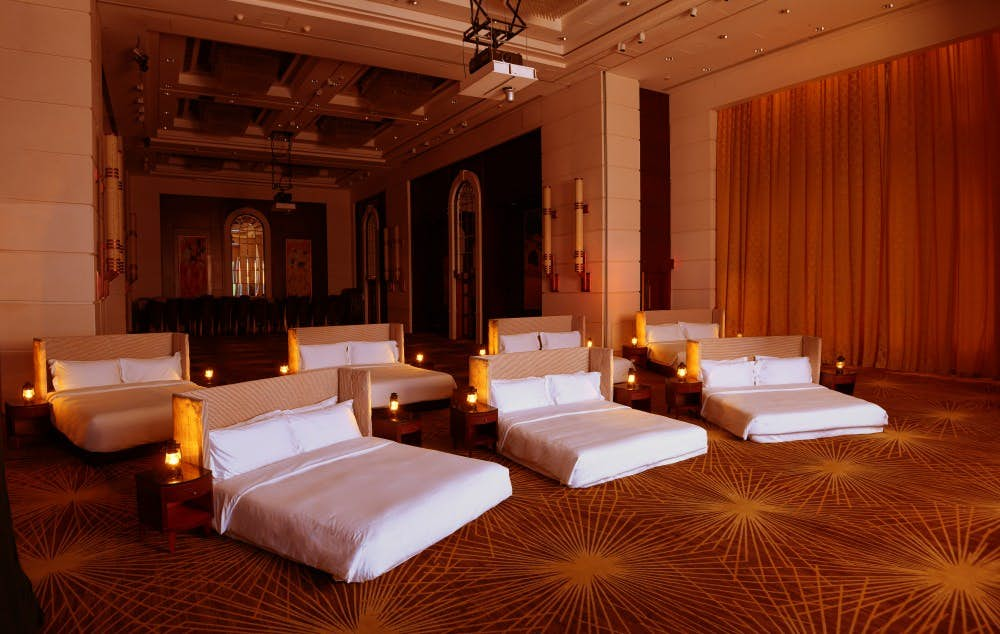Marriott has teamed up with the Professional Convention Management Association (PCMA) to review the key trends that experts predict will transform the meetings industry.
“In 2015 the majority of both meeting professionals and meeting venues reported growing attendance and revenues. While we are excited about these strong results, we also need to remain focused on our industry’s future,” said PCMA president and CEO, Deborah Sexton. “Together, PCMA and Marriott International identified both the trends on the horizon and the actions we need to explore to prepare our constituents to leverage these trends.”
The trends identified are expected to affect the way meetings are approached and executed over the next three to five years. They include:
1) Sensory analytics
Imagine sensors that can take the pulse of the room. Are attendees too hot, losing interest, responding positively to the material? Advancements in data analytics, as well as cheaper and smaller physical sensors, are simplifying the ability to collect data about physical experiences, analyze the inputs and make adjustments in real time. These sensors and data collections from various sources will communicate with each other creating an “Internet of Things”. Looking forward, the group believes that meetings and events will allow for minute-to-minute adjustments, driving greater engagement and effectiveness. Sensor technology will soon be so ubiquitous that it could help planners and venues better understand engagement metrics of individuals and groups, such as heart rate, eye movement and stress levels.
2) Tribalisation
From Meetups to CrossFit to hack-a-thons, today’s consumers are moving away from individualism and towards “tribal” communities of likeminded individuals who can push each other to higher levels. As these communities grow in popularity, we believe the value of a meeting becomes less about the content and speakers and more about the attendee list. The group also believes that participants will increasingly value connection at physical events. As a way to achieve better results, the group expects the planning of meetings will adapt to foster smaller groups. Meeting venues will also need to adapt to facilitate a more tribe-focused approach that supports collaboration through adjustable infrastructure and technology.
3) Content safaris
Media reaches people through a variety of always-on, personalised channels. As consumers continue to expect content to be curated and in their control, meetings will need to provide multiple options from which attendees can forge their own paths. Meeting planners may need to restructure content or manipulate a room’s physical set-up to adapt to real time participant feedback. Achieving this will create a sense of ownership and self-discovery for attendees. Wilhelm Oehl, principal and partner at retail architecture design firm, Eight, Inc., alluded to this near-term change: “It is no longer about meeting in the conference room to sit in chairs around this table for two hours, looking at a monitor. The expectation is much, much more dynamic, and much, much different.”
4) Living 360°
There has been a shift in the definition of wellness to now include physical, emotional, spiritual and social dimensions that are unique to each person. With diet and exercise options now standard requisites, the group believes the meetings industry will need to raise the bar and offer unique ways for attendees to achieve the more holistic wellness, or wholeness, they desire. As more health influences can be measured and expectations rise, hotels will be incentivised to customise everything from lighting to airflow in venues to create healthier environments.
5) Immersive telepresence
Immersive telepresence offers heightened emotional and physical experiences that could disrupt the meetings business and other forms of content sharing. As advancements in technology continue to increase immersive telepresence’s capabilities, the group believes the meetings industry will find ways to work with new formats that seamlessly convey content and ideas with similar, if not stronger, storytelling than in-person presentations and gatherings. As the definition of attendee, speaker, and location broadens to include those participating remotely through immersive telepresence, planners will need to craft coordinated experiences that appeal to both in-person and virtual participants.


